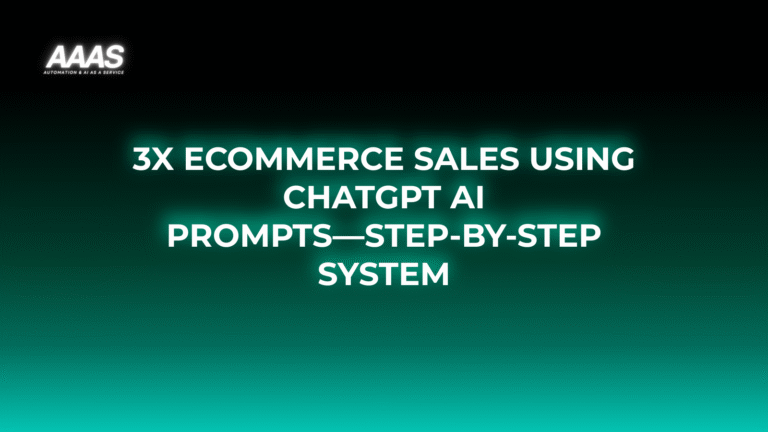3629
“`html

The Market Problem: Manual Workflows Stifle Growth
In today’s digital business landscape, manual workflows consume up to 36% of knowledge workers’ time (McKinsey). Data entry, repetitive tasks, and disconnected software result in bottlenecks, operational errors, and frustrated teams. As organizations adopt more Software-as-a-Service (SaaS) tools (an average of 130+ SaaS apps per company, according to BetterCloud), the challenge: how to unify and automate business processes without IT overload or heavy developer investment?

How No-Code Automation and SaaS Integration Solve the Problem
No-code automation platforms (like Zapier, Make, n8n.io) democratize automation. They offer drag-and-drop interfaces and pre-built connectors for top SaaS apps—meaning business users (not just IT) can build, launch, and iterate workflows. This leads to:
- Productivity gains: Automate repetitive work across apps and departments.
- Improved efficiency: Real-time data sync, fewer errors, immediate notifications.
- Cost reduction: Minimize manual labor and eliminate silos—lowering overhead and employee burnout.
- Faster time-to-market: Launch new automations in hours, not months.

Real Use Cases & Industry Examples
| Industry | Workflow Automated | Impact |
|---|---|---|
| SaaS (Sales) | Lead assignment from web form to CRM | Response time down by 60%, leads up 35% (source: Zapier report) |
| eCommerce | Order-to-inventory sync between Shopify, QuickBooks | 99% reduction in stock-out errors |
| HR & Recruiting | Resume parsing & interview scheduling | 80% time saved per hiring cycle (HubSpot) |

Technical Details & Integration Methods
No-Code Connectors
Most no-code platforms (Zapier, Make) offer thousands of prebuilt SaaS integrations, including REST API, webhooks, and direct database connectors.
- Trigger: Event in one SaaS app (e.g., ‘new order’ in Shopify)
- Action: Automation step in another (e.g., ‘add invoice’ to Xero)
- Data Transformation: Map and cleanse fields with built-in logic or formulas.
Advanced Use (Custom APIs & Webhooks)
For edge cases, users can call custom APIs, leverage HTTP modules, or pipe data with scripts (no-code tools often allow JavaScript functions). This empowers scaling as teams grow more advanced.

Comparison: No-Code Automation vs. Alternatives
| Method | Speed | Cost | Scalability | Skill Required |
|---|---|---|---|---|
| No-Code Automation (e.g., Zapier, Make) | Minutes-to-hours | Low (from $20/mo) | High for SMBs, moderate for enterprise | Non-developer |
| Custom Coding / APIs | Weeks-to-months | High (dev time, $1,000s per integration) | Very High | Developer |
| Point-to-Point Native Integrations | Variable | Included in SaaS fees | Limited (vendors set scope) | Low |
No-code platforms offer the best blend of speed, cost, and accessibility for 90%+ of typical business process needs.
Pricing Analysis & ROI Calculations
No-Code Automation Tool Pricing (2024)
| Provider | Starter Plan (Monthly) | Business Plan | Free Tier? |
|---|---|---|---|
| Zapier | $19.99 | $49+ | Yes (limited runs) |
| Make | $9 | $29+ | Yes |
| n8n.io (Self-hosted) | Free | $20+ (cloud) | Yes |
ROI Example: SMB automates 10 hours/week of admin work at $25/hour wage.
Monthly labor savings: $1,000+ vs. tool cost ~$20–$50 (Trello No-Code Study).
Net ROI: 20x–50x in month one.
Practical Workflow Examples
-
Automatic Lead Routing: Direct new inbound form leads (Typeform) to HubSpot CRM, followed by a Slack notification, using Zapier.

- Invoice & Accounting Automation: When a customer pays via Stripe, trigger invoice creation in QuickBooks and alert finance via email.
- Document Generation: On client onboarding form submission, instantly generate a personalized PDF contract and store it in Google Drive.
Step-by-Step Setup Guide
- Map your key business processes and bottlenecks needing automation.
- List the SaaS tools in your stack (CRM, marketing, billing, etc.).
- Choose a no-code platform (e.g., Zapier, Make, n8n.io).
- Connect your apps inside the platform with OAuth (secure login).
- Build automations using triggers (e.g., “new email”) and actions (“create task in project management app”).
- Test automations with sandbox data—verify outputs and alert rules.
- Launch live automations, monitor logs/analytics, and iterate monthly.


